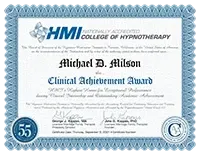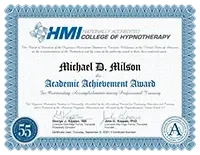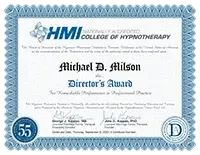
Unlock Healing: Explore Emotional Freedom Technique's Path to Alleviating Distress
Introduction
The realm of emotional healing has seen a plethora of techniques designed to bridge the gap between the mind and body. Among these, the Emotional Freedom Technique (EFT) shines as a gentle yet potent method to alleviate both physical and emotional discomfort.
Brief explanation of Emotional Freedom Technique (EFT)
EFT, often dubbed as "psychological acupressure," unveils a modern approach to ancient healing techniques. Rooted in the same principles as acupuncture, EFT forgoes needles and instead employs tapping on specific acupressure points on the body. This tapping endeavors to balance the energy within the body, thus paving the path towards alleviating physical and emotional pain. (eftdownunder.com)
The core of EFT lies in the belief that emotional distress and its accompanying physical symptoms are often the result of energy blockages. By tapping on these specific acupressure points, one can release these blockages, restore the natural flow of energy, and consequently, alleviate the distress.
The process of EFT involves a few simple steps:
Identifying the issue: Pinpointing the emotional or physical distress you wish to address.
Measuring the distress: Scaling the intensity of your distress from 1 to 10.
Crafting the setup statement: A verbal affirmation acknowledging the problem, coupled with a self-acceptance statement.
Tapping sequence: Tapping on specific acupressure points while vocalizing the setup statement.
Reassessing the distress: Evaluating any change in the distress level and repeating the process if necessary.
The beauty of EFT lies in its simplicity and the gentle approach towards healing, making it accessible to individuals irrespective of age or health condition.
Significance of EFT in modern-day healing practices
In a world where the hustle of daily life often leaves individuals with layers of unaddressed emotional baggage, EFT emerges as a beacon of hope. It's not just the simplicity of the technique, but the efficacy and speed at which it often works that has led to its widespread acclaim. Unlike many traditional therapies, EFT provides an avenue for individuals to actively participate in their healing process, which often empowers them to continue the practice independently.
Moreover, the versatility of EFT is remarkable. It's been utilized to address a wide range of issues including but not limited to:
Stress and Anxiety: Offering a natural way to calm the nervous system.
Phobias: Providing a method to confront and dissipate fear.
Chronic Pain: Aiding in the management and reduction of persistent physical discomfort.
Emotional Trauma: Facilitating the processing and release of traumatic memories.
Furthermore, EFT aligns seamlessly with the modern-day shift towards holistic wellness. It acknowledges the intertwining of the mind, body, and energy systems, a concept that is now being embraced more widely across the globe.
In conclusion, the Emotional Freedom Technique is not just a method; it's a movement towards attaining emotional liberty and physical ease. Its roots might trace back to ancient healing modalities, yet its relevance in today's world is profound. As we delve deeper into the subsequent sections, the evolution, principles, and application of EFT will be unfolded, providing a rich understanding of this unique healing technique.
Historical Roots
The tapestry of Emotional Freedom Technique (EFT) is rich with historical threads that trace back to ancient healing traditions. It’s a beautiful blend of age-old wisdom and modern psychological understanding. As we traverse back in time, we unveil the profound influences that shaped this powerful self-help tool.
Ancient Chinese Medicine and the Advent of Acupuncture
The genesis of EFT can be traced back to the ancient Chinese practice of acupuncture. For thousands of years, traditional Chinese medicine has revered the concept of a life force, or Qi, flowing through meridian pathways within the body. Acupuncture, with its delicate needles, was devised as a method to regulate this energy flow, addressing ailments ranging from physical pain to digestive issues. (patcarrington.com)
However, the primary focus of acupuncture was physical ailments, leaving the emotional realm largely unexplored. The significance of meridian points in healing was well established, but the bridge to emotional healing was yet to be built.
Transition from Acupuncture to Tapping: Dr. George Goodheart's Exploration
The metamorphosis from acupuncture to tapping began with Dr. George Goodheart, a chiropractor from the United States. Intrigued by acupuncture, Goodheart substituted the needles with simple manual pressure or tapping on the acupuncture points, realizing that this non-invasive approach yielded beneficial results too. (patcarrington.com) This laid the foundation for what would later evolve into tapping therapies.
The Birth of Behavioral Kinesiology by Dr. John Diamond
The journey continued with Dr. John Diamond, an Australian psychiatrist who took Goodheart's discovery a leap further. Diamond melded affirmations with tapping on selected acupuncture points to specifically address emotional issues. He named this novel approach Behavioral Kinesiology. This was a significant stride towards merging emotional healing with meridian point stimulation, foreshadowing the emergence of modern-day meridian-based therapies.
Dr. Roger Callahan's Contribution: From Applied Kinesiology to Emotional Healing
The storyline of EFT further unfolds with Dr. Roger Callahan, an American psychologist specializing in anxiety disorders. Inspired by Goodheart’s and Diamond’s work, Callahan delved into Applied Kinesiology and the meridian system of acupuncture. His exploration bore fruit when he ingeniously combined tapping on acupoints with mental focusing on specific fears or phobias, birthing a structured approach to address emotional issues through tapping.
The defining moment came during a session with a patient named Mary, who had a severe water phobia. By tapping on an acupoint linked to her stomach meridian while she focused on her fear, Callahan was able to alleviate her phobia significantly. This marked the inception of a structured tapping procedure to address emotional problems, a precursor to the Emotional Freedom Technique.
The Genesis of EFT
The tale of Emotional Freedom Technique (EFT) is akin to a river, its currents shaped by various tributaries along the way. Among the significant contributors, Gary Craig emerges as a crucial figure who channelized the scattered streams of knowledge into the structured framework of EFT we recognize today.
Gary Craig's Role in the Development of EFT during the 1980s
Gary Craig, a Stanford engineering graduate with a fervor for personal improvement psychology, delved into the world of energy healing in the early 1980s. His quest for efficient and effective therapeutic methods led him to Dr. Roger Callahan's Thought Field Therapy (TFT). Impressed by the potential of TFT, yet driven by a desire for simplification and accessibility, Craig embarked on a journey to develop a more streamlined version of this therapy.
His objective was clear: to devise a technique that retained the essence and effectiveness of TFT, yet was accessible to the layperson without the need for extensive training or memorization of complex algorithms.
By the early 1990s, Craig's relentless endeavor bore fruit, and the Emotional Freedom Technique was born. Here’s a glimpse into the evolutionary steps that marked EFT's inception:
Distillation: Craig distilled the essence of TFT, retaining the core principle of tapping on specific meridian points while eliminating the complexity of diagnosing which points to tap.
Simplification: He simplified the process into a routine that could be easily taught, learned, and applied by anyone, regardless of their background in psychology or energy healing.
Dissemination: Craig was passionate about sharing this empowering tool with the masses. He embarked on a mission to disseminate the knowledge of EFT through workshops, seminars, and eventually, through online platforms.
Refinement: Over time, based on feedback from practitioners and his own evolving understanding, Craig refined the technique, making it even more user-friendly and effective.
EFT, as envisioned by Gary Craig, was a “universal healing tool” that could be applied to a vast spectrum of emotional and physical issues. His vision was to empower individuals to take charge of their emotional health by equipping them with a self-help tool that was both potent and easy to use.
Gary Craig’s EFT Manual became a seminal guide for individuals and practitioners alike, laying down the simple yet effective procedure of EFT. His mantra was to “Try it on everything,” emphasizing the versatile nature of EFT.
The legacy of Gary Craig is not merely the creation of a therapeutic technique, but the sparking of a self-help movement that continues to empower individuals worldwide.
Core Principles
The Emotional Freedom Technique (EFT) may seem like a simple tapping ritual, but beneath its simplistic exterior lies a rich tapestry of age-old wisdom intertwined with modern psychological understanding. At its core, EFT operates on two fundamental principles: the ancient Chinese concept of energy meridians and the modern understanding of emotional blockages leading to distress. Let's dive deeper into these foundational pillars that hold the structure of EFT.
The Energy Meridians and Acupressure Points
The age-old Chinese philosophy proposes the existence of a vital life force, often referred to as Qi or Chi, flowing through defined pathways in our body known as meridians. These meridians act as energy highways, facilitating the flow of life force to various organs and systems. The points where these meridians are accessible from the surface of the skin are termed acupressure points or meridian points.
There are 12 primary meridians, each corresponding to a specific organ or system, and several secondary meridians. The meridians form a complex network, ensuring the uninterrupted flow of energy which, according to Chinese medicine, is crucial for maintaining health and well-being.
The cornerstone of EFT is the gentle tapping on these acupressure points to stimulate the energy flow. Unlike acupuncture, which uses needles, EFT uses the fingertips to tap on these points, making it a non-invasive yet effective method to interact with the body’s energy system.
The commonly tapped points in EFT include:
The top of the head
The inner eyebrows
The side of the eyes
Under the eyes
Under the nose
The chin
The collarbone
Under the arms
Tapping on these points while focusing on a specific emotional issue is believed to restore balance to the disrupted energy system, thus aiding in alleviating emotional distress.
The Theory of Energy Blockages Leading to Emotional Distress
Modern psychology meets ancient wisdom in EFT’s understanding of emotional distress. It proposes that negative emotions or distressing memories cause a disruption or blockage in the energy system, which in turn may manifest as physical ailments or further emotional disturbances.
Gary Craig succinctly summed up this principle with the phrase, “The cause of all negative emotions is a disruption in the body's energy system.” This concept forms the bedrock of EFT, driving the practice of tapping to clear these blockages, thereby restoring the natural flow of energy.
The process of tapping while tuning into the negative emotion or memory helps in:
Acknowledging the issue: Recognition and acknowledgment are the first steps toward healing.
Tuning into the energy disruption: Focusing on the emotion helps in identifying the energy disruption.
Clearing the disruption: Tapping on the meridian points helps in clearing the energy blockage, thus facilitating emotional relief.
The Mechanics of EFT
The mechanics of Emotional Freedom Technique (EFT) presents a beautiful synthesis of simplicity and efficacy. It’s where the ancient wisdom of energy meridians meets the modern understanding of emotional healing. Let’s explore the pivotal process of tapping and its profound impact on energy points, along with the unique dual attention strategy employed in EFT.
The Process of Tapping and Its Effects on Energy Points
At the heart of EFT lies the gentle tapping on specific acupressure points. This rhythmic tapping is performed using the fingertips, where each point is tapped approximately five to seven times. The points chosen are those that are traditionally believed to be junctures of energy pathways, also known as meridians.
Here's a step-by-step breakdown of a typical EFT tapping sequence:
Identify the Issue: Pinpoint the emotional or physical issue you want to address.
Measure the Intensity: Assess the intensity of the issue on a scale of 0 to 10.
Craft a Setup Statement: Create a phrase that acknowledges the issue and affirms self-acceptance despite the problem.
Begin Tapping:
Start by tapping on the karate chop point (the outer edge of the hand) while repeating the setup statement three times.
Proceed to tap on the other designated points while repeating a reminder phrase to keep focused on the issue.
Evaluate: Re-assess the intensity of the issue, and repeat the process if necessary.
The act of tapping is believed to stimulate the energy points, thereby aiding in the release of blockages within the energy system. This stimulation, in conjunction with the vocal acknowledgment of the issue, paves the path for emotional and physical relief.
The Dual Attention on Acupressure Points and the Current Difficulty
An intriguing aspect of EFT is the dual attention on both the acupressure points and the emotional or physical issue at hand. As you tap on each point, you also vocalize the problem or the negative emotion you are experiencing.
This dual attention serves a twofold purpose:
Engagement: By vocalizing the issue, you are engaging with it, acknowledging its presence, and facing it head-on.
Energy Alignment: As you tap on the energy points, you are working to realign the disrupted energy flow associated with the distress.
The combination of physical tapping and mental focus helps in addressing the emotional distress from a holistic standpoint, engaging both the body and the mind in the healing process.
Moreover, this dual focus aids in maintaining the mind-body connection, an essential aspect for ensuring the effectiveness of the technique. It’s a dance between acknowledging the problem and working through the energy system to alleviate it.
Scientific Backing and Skepticism
The journey of Emotional Freedom Technique (EFT) through the scientific landscape has been both intriguing and contentious. While numerous individuals and practitioners vouch for its efficacy, the scientific community at large has met EFT with a mixture of curiosity, skepticism, and rigorous inquiry. Let's delve into what science reveals about this technique and where skepticism arises.
What Science Says: The Stimulation of the Central Nervous System
The scientific backing of EFT primarily hinges on the interaction between the tapping process and the central nervous system. Here’s what some research suggests:
1. Neurophysiological Effects:
Studies have shown that EFT tapping can lead to a decrease in cortisol levels, a hormone associated with stress. (goodtherapy.org)
EFT has been found to modulate the brain’s stress response systems, potentially aiding in the alleviation of anxiety and depression. (healthline.com)
2. Psychological Effects:
Research has shown EFT to be effective in reducing the symptoms of Post Traumatic Stress Disorder (PTSD) in veterans. (webmd.com)
EFT has also shown promise in alleviating anxiety and depression symptoms, with some studies showing its effectiveness comparable to that of standard CBT (Cognitive Behavioral Therapy). (medicinenet.com)
3. Physical Effects:
Some studies suggest that EFT can help in managing chronic pain conditions, possibly due to its effect on reducing emotional distress associated with pain. (psycnet.apa.org)
4. Brainwave Alterations:
EFT tapping has been associated with changes in brainwave activity, potentially reflecting a shift towards a more relaxed state. (rebprotocol.net)
These findings, among others, paint a promising picture of EFT’s potential in addressing a range of emotional and physical issues. However, it's important to note that while the body of research is growing, EFT is still on its journey towards gaining widespread scientific acceptance.
Skepticism Surrounding EFT
The road to scientific validation is often long and arduous, and EFT is no exception. Here are some areas where skepticism arises:
1. Methodological Concerns:
Critics often point out the small sample sizes and lack of control groups in many EFT studies, which could potentially skew the findings.
2. Lack of Understanding:
The underlying mechanism of how EFT works at a biological level is not fully understood, which often leads to skepticism.
3. Placebo Effect:
Skeptics also argue that the positive effects reported could be attributed to the placebo effect, where merely the expectation of improvement leads to actual improvement.
4. Comparison with Established Therapies:
There is also a call for more comparative studies to ascertain EFT’s effectiveness against established therapies like CBT.
Applications of EFT
The Emotional Freedom Technique (EFT) showcases a broad spectrum of applications, embracing both the mind and the body in its gentle rhythmic dance of tapping. From the transient stresses of daily life to the haunting shadows of the past, EFT offers a beacon of hope and a pathway to healing. Let's delve into the prominent areas where EFT is making waves.
Stress and Anxiety Alleviation
In today’s fast-paced world, stress and anxiety are often unwelcome companions. EFT provides a simple yet potent tool to combat these modern-day maladies.
1. Immediate Stress Relief:
The act of tapping while focusing on the stressor can provide immediate relief from acute stress.
The rhythmic nature of tapping can induce a meditative state, helping to calm the nerves.
2. Long-Term Anxiety Management:
Regular practice of EFT has shown promising results in managing chronic anxiety.
By addressing the underlying energy disruptions associated with anxiety, EFT aids in establishing a calmer mental state over time.
3. Enhancing Self-Awareness:
EFT encourages individuals to tune into their emotions, promoting a deeper understanding of what triggers their stress and anxiety.
This enhanced self-awareness can be empowering, enabling individuals to better manage their emotional responses to stressors.
Treating Phobias and Other Psychological Issues
The application of EFT extends beyond the realm of daily stressors, reaching into the deeper psychological challenges that individuals may face.
1. Phobia Treatment:
EFT can be particularly effective in addressing phobias by neutralizing the intense emotional response associated with specific fears.
Through tapping, individuals can work through the energy disruptions tied to their phobias, gradually reducing their fear response.
2. Trauma and PTSD:
For those haunted by traumatic experiences, EFT offers a gentle approach to working through the emotional remnants of the past.
The technique has shown promise in alleviating the symptoms of PTSD, providing a pathway towards healing and emotional freedom.
3. Depression:
By addressing the energy blockages associated with depressive emotions, EFT can aid in lifting the heavy emotional clouds that depression often brings.
4. Addiction:
EFT can also be used as a supportive tool in addiction recovery, helping individuals work through the emotional triggers that may lead to substance abuse.
Procedure of EFT
The Emotional Freedom Technique (EFT) is not just a method but a journey into self-awareness and healing. The procedure is gentle, non-invasive, and can be self-administered, making it a highly accessible tool for anyone seeking emotional relief. Here, we delve into the step-by-step procedure of EFT, focusing on a simplified 5-step technique aimed at anxiety relief.
The 5-Step Technique for Anxiety Relief
Engaging with EFT to alleviate anxiety involves a structured yet flexible approach. The following steps outline a basic procedure, which can be tailored to meet individual needs and circumstances.
1. Identify the Issue:
Begin by pinpointing the specific anxiety or fear you wish to address.
It's crucial to be as specific as possible to effectively target the energy disruptions associated with the anxiety.
2. Measure the Intensity:
Assess the intensity of your anxiety on a scale of 0 to 10, where 0 represents no anxiety and 10 represents the highest level of anxiety.
This measurement helps to track the progress as you move through the EFT procedure.
3. Craft the Setup Statement:
Create a setup statement that acknowledges the issue and also conveys self-acceptance.
Example: “Even though I feel anxious about [the issue], I deeply and completely accept myself.”
4. The Tapping Sequence:
Begin tapping on the karate chop point (the outer edge of your hand) while repeating the setup statement three times.
Proceed to tap on the remaining points in the sequence (top of head, eyebrow, side of eye, under eye, under nose, chin, collarbone, under arm) while repeating a reminder phrase, like “this anxiety” or “this fear.”
5. Re-evaluate:
After completing a few rounds of tapping, re-assess the intensity of your anxiety.
If the anxiety level has decreased but not completely resolved, repeat the process as necessary, adjusting the setup statement and reminder phrase as needed.
Comparative Analysis
The therapeutic realm is a vast ocean of methodologies, each with its unique essence and approach towards healing. Emotional Freedom Technique (EFT) is a relatively novel entrant in this expansive domain, yet it has carved a niche for itself. In this section, we venture into a comparative analysis, juxtaposing EFT against traditional therapies and other alternative healing techniques.
EFT vs Traditional Therapies
The dialog between EFT and traditional therapies unveils a spectrum of contrasts and convergences.
1. Approach:
EFT: Focuses on energy meridians and acupressure points to address emotional and physical ailments.
Traditional Therapies (e.g., Cognitive Behavioral Therapy): Primarily address cognitive processes and behavioral responses.
2. Duration:
EFT: Often yields rapid results, sometimes in as little as a few minutes to an hour.
Traditional Therapies: Generally require a longer commitment, spanning weeks to months, or even years.
3. Self-Administered:
EFT: Can be self-administered once the basic technique is learned.
Traditional Therapies: Typically require the guidance of a trained therapist.
4. Evidence Base:
EFT: Emerging evidence base with some promising findings.
Traditional Therapies: Well-established evidence base, widely accepted in the medical community.
EFT vs Other Alternative Healing Techniques
Delving into the comparison with other alternative healing techniques unveils EFT's unique essence.
1. Acupressure and Acupuncture:
Both EFT and acupressure involve stimulating acupoints, but EFT incorporates verbal affirmations which are absent in acupressure.
Acupuncture involves inserting needles, while EFT is non-invasive.
2. Reiki and Energy Healing:
EFT, Reiki, and Energy Healing all delve into the body’s energy system, yet EFT provides a structured technique for self-healing, whereas Reiki and Energy Healing often require a practitioner.
3. Mindfulness and Meditation:
EFT can be seen as more active and problem-focused compared to the passive, observational nature of mindfulness and meditation.
4. Yoga and Tai Chi:
While EFT focuses on tapping specific points, Yoga and Tai Chi involve a series of movements and poses aiming for a holistic balance.
Conclusion
As we traverse through the corridors of Emotional Freedom Technique (EFT), it’s akin to unraveling a novel that bridges the ancient wisdom with modern therapeutic methodologies. The tapestry of EFT is rich and intricate, offering a gentle yet profound approach to emotional and physical healing.
The Impact and Relevance of EFT in Contemporary Healing Methodologies
The realm of modern healing is a dynamic and evolving landscape, always on the lookout for effective, accessible, and holistic approaches to promote well-being. EFT emerges as a potent candidate in this quest, weaving a narrative of self-empowerment and autonomy in one’s healing journey.
Accessibility: EFT’s non-invasive, straightforward methodology makes it highly accessible to individuals across different walks of life.
Holistic Healing: By addressing the energy imbalances associated with emotional distress, EFT promotes a holistic approach to healing, offering a complementary or alternative route to conventional therapeutic practices.
Self-Empowerment: The ability to self-administer EFT empowers individuals to take charge of their emotional well-being, fostering a sense of autonomy and self-efficacy.
Cost-Effectiveness: Without the requirement for specialized equipment or prolonged therapy sessions, EFT presents a cost-effective solution for those seeking emotional relief.
Future Prospects of EFT
The journey of EFT is akin to a river, carving its way through the therapeutic landscape, and its potential to nourish the fields of modern healing is immense.
Research and Validation: As more research unfolds validating its efficacy, EFT is likely to gain more recognition and acceptance within the mainstream medical and psychological communities.
Integration: The potential integration of EFT within traditional therapeutic frameworks can offer a more holistic and integrative approach to mental health care.
Online Platforms: The rise of online platforms offering EFT training and resources can facilitate a wider dissemination of this technique, making it accessible to individuals globally.
Specialized Applications: Future exploration may lead to the development of specialized EFT applications targeting a range of specific conditions, expanding its therapeutic repertoire.
Further Education
If you would like to learn How to perform Emotional Freedom Technique check out the following course: Unlock EFT Mastery in One Hour




